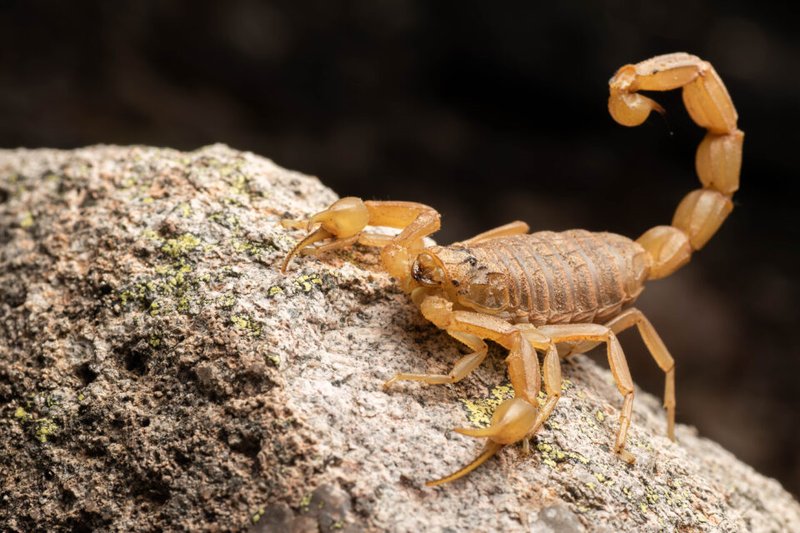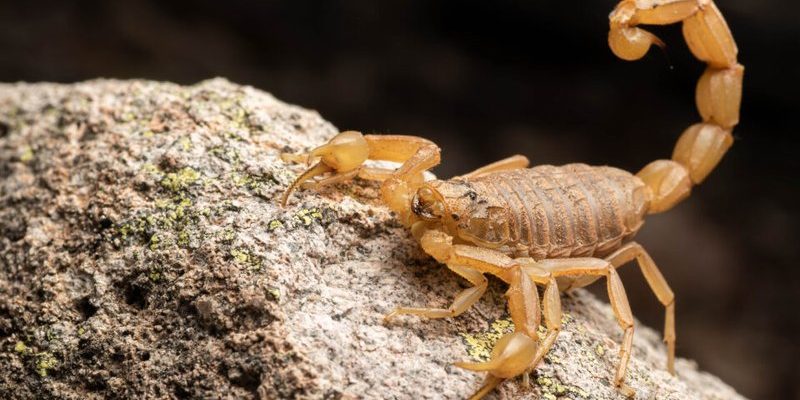
Arizona Bark Scorpions are more than just a spooky presence. They play an important role in keeping pests in check. Think of them as nature’s pest control agents. They thrive in specific environments and have some curious habits that help them survive. Let’s dive into their world, exploring where you might bump into these critters.
Natural Habitats of the Arizona Bark Scorpion
Arizona Bark Scorpions are commonly found in a variety of natural settings, but they have a strong preference for warm, dry areas. You’ll often find them in the desert regions of Arizona—think sandy soils dotted with succulents and sparse vegetation. These scorpions enjoy hiding under rocks, in crevices, or even under the loose bark of trees.
Their preference for dry climates doesn’t mean they won’t venture into other environments. They’ve been spotted in urban areas, especially where there’s shelter and food. For example, they can often be found in yards, gardens, and even inside homes, especially during the warmer months. They’re attracted to light, which can lead them to venture in after buzzing insects. So, if you live in Arizona, keep an eye out!
Common Regions Within Arizona
Let’s take a closer look at where you might encounter these scorpions within Arizona itself. They are particularly prevalent in the Sonoran Desert, which stretches across the southwestern U.S. and Mexico. This desert provides the perfect mix of hot weather and hiding spots essential for scorpions to thrive.
In addition to the Sonoran, areas around cities like Phoenix and Tucson are hotspots for these little guys. The urbanization in these regions creates numerous microhabitats that attract scorpions. People often find them in swimming pools, garages, and basements where they can find warmth and moisture. And don’t be surprised if you find one in your *backyard.* They can be pretty adventurous!
Behavior and Nocturnal Activity
You might be wondering how the Arizona Bark Scorpion navigates its environment. These creatures are primarily nocturnal, which means they’re most active at night. As the sun sets and temperatures drop, they come out in search of food and mates. Their favorite meals? Small insects—think crickets and cockroaches. Honestly, their hunting skills are impressive!
During the day, they seek refuge from the harsh sunlight. They can often be found hiding under rocks or in small burrows. Some even burrow into the sand to escape the heat. This behavior is essential for their survival, as it helps them retain moisture and stay out of direct sunlight. So, if you’re exploring the desert during the day, guess what? You’re unlikely to see one of these critters out and about.
Impacts of Weather and Climate
Weather plays a significant role in the distribution of Arizona Bark Scorpions. During the wet season, which usually occurs in late summer, these scorpions may move to higher ground or seek shelter as their typical habitats become too moist. Heavy rains can wash them out, forcing them to find new places to live.
Hot and dry conditions tend to be perfect for scorpions. During these times, they’re more likely to venture out. If you’ve ever been on a hike in the desert, you might not have noticed them, but their presence is all around. The dry climate means they get to thrive, making them a common sight in their favorite haunts.
Potential Encounters with People
Knowing where these scorpions are can help you avoid any unfortunate encounters. While the Arizona Bark Scorpion can give you a nasty sting, they generally prefer to stay away from humans. Most bites happen when they’re accidentally stepped on or handled. If you’re living or spending time in their territory, there are a few things you can do to minimize your chances of a run-in.
First, keep your surroundings clean. Trim back overgrown vegetation where they might be hiding. If you notice debris or rocks around your home, it might be a good idea to clear them out. This will reduce their hiding spots, making your yard less inviting. Also, consider installing screens on windows and doors to keep them from wandering inside.
What to Do If You Encounter One
So, you’ve spotted an Arizona Bark Scorpion—now what? Here’s the thing: while it can be alarming, remember that they don’t typically seek out humans. Your first instinct might be to panic, but take a deep breath. If you find one in your home, try to remain calm and avoid direct contact.
You can gently encourage it to leave by using a piece of cardboard or a container. Just remember to wear gloves! If you or someone else gets stung, it’s important to seek medical attention, especially for those who might be allergic. Most stings are painful but not life-threatening, though it’s always best to err on the side of caution.
The Role of Arizona Bark Scorpions in the Ecosystem
Lastly, let’s take a moment to appreciate how the Arizona Bark Scorpion contributes to our ecosystem. These creatures may seem menacing, but they play an important role in controlling pest populations. By feasting on insects, they help maintain a natural balance, preventing infestations that could harm local vegetation and agriculture.
They’re also a food source for other animals, such as birds and mammals. This makes them a crucial link in the food chain. So, while they may not be the cutest critters around, they certainly do their part in the grand scheme of nature.
In conclusion, knowing where the Arizona Bark Scorpion is commonly found helps you appreciate these fascinating creatures. From the dry desert landscape to your backyard, they play an important role in their environment. So, whether you’re hiking through the Sonoran Desert or simply enjoying a night in Phoenix, take a moment to recognize the little scorpions around you. They’re more than just scary wildlife—they’re an integral part of the ecosystem.

